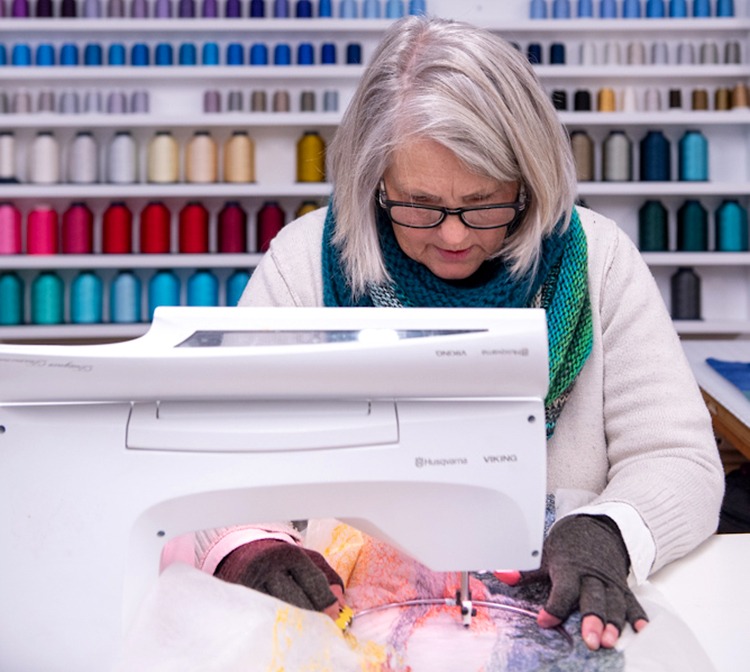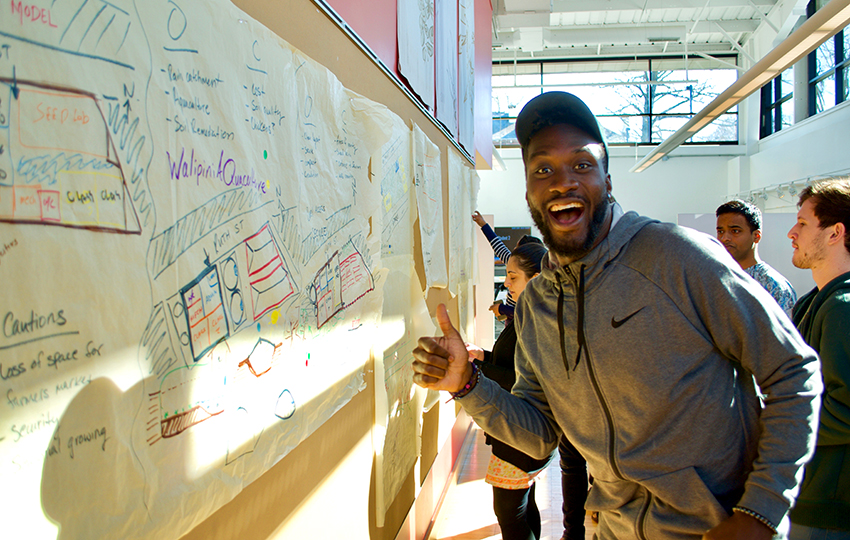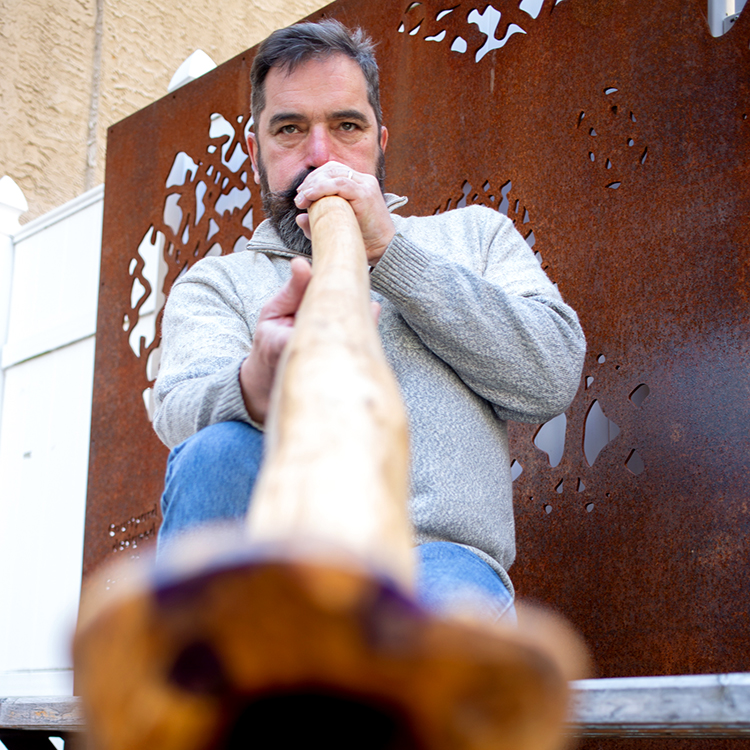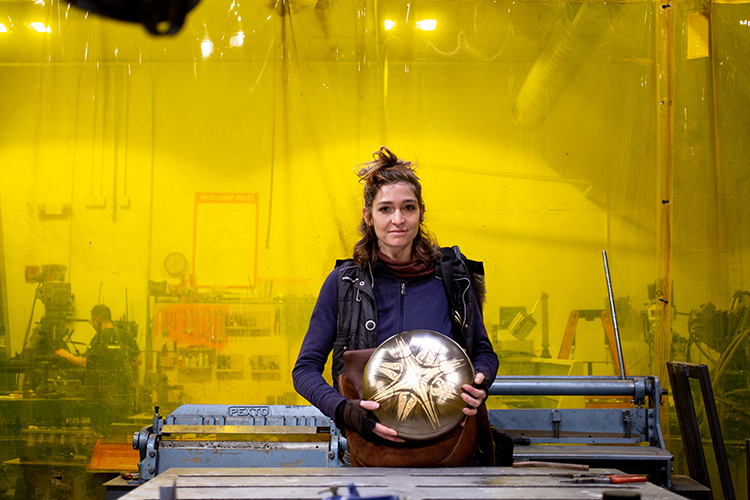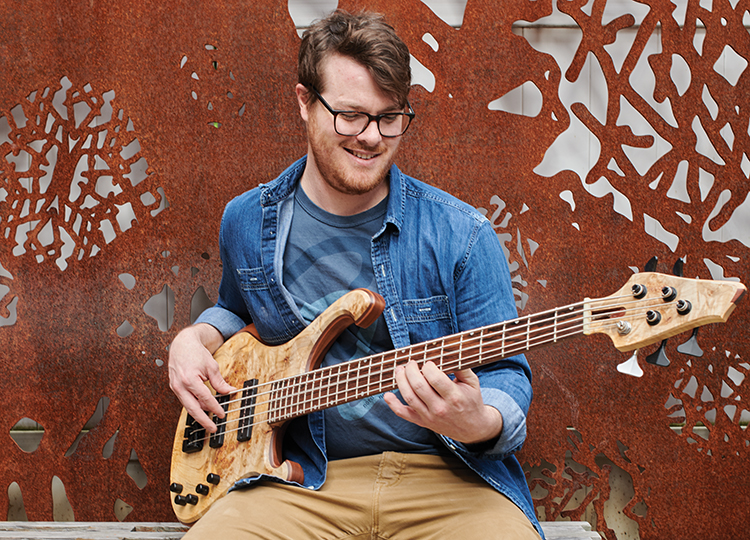by Alexandra Jones
If things had gone the way she wanted, Carla J. Fisher probably wouldn’t have become an artist.
Instead of working away in her bright, colorful studio on Cherry Street Pier, starting new pieces in between boxing up art destined for buyers in South Korea and exhibitions in Luxembourg, the 60-something woman might still be traveling around in a 40-foot RV with her late husband Ed—camping, seeing the sights and visiting their children .
That was the plan when Fisher left a 25-year career as a high-achieving financial services manager. Before that, she’d traveled the world and raised a family with Ed, her sweetheart since college, during his career as an army officer.
He convinced her to retire early so they could spend their golden years together — but 15 months in, Ed suffered a series of heart attacks and was later diagnosed with an aggressive form of prostate cancer. He passed on October 12, 2013.
Fisher’s life was blown apart.
“When you’ve lost your spouse of 40 years, you feel pretty useless, wasted, empty, discarded—all those ugly words,” Fisher says.
After her husband passed, she had to figure out who she was and what she wanted to do on her own. She enrolled in an MFA program in fibers and mixed media at University of the Arts and graduated in
May of 2016.
Fisher had wanted to be an artist since she was a child, but she’d been discouraged. She’d always loved to sew and make patterns. And at UArts, she’d hit on a singular technique that would allow her to make thread itself her medium.
“I take old, trashy things and give them new life as something beautiful, much as the art did for me,” she explains.
Rather than sewing onto fabric, Fisher stitches designs onto thin, textured sheets of plasticky surgical film, using a specially modified industrial sewing machine; the film gives her stitches something to hold onto. Next, she uses a cotton swab dipped in hot water to dissolve the film, which is designed to biodegrade in the body, around the shapes and crosshatches she’s stitched. The melted film provides structure to the thread so that it can be shaped, painted, and embellished with additional fibers and
discarded objects.
“The thread is a metaphor for me,” she says. “I make thread do things that nobody believes it can do.”
“Unbelievable” is an apt descriptor for Fisher’s works—her pieces catch the eye first with sprawling forms, vivid colors, dynamic textures and tricky shadows.
Drawing closer, their surfaces teem with activity and drama. “ Nature’s Ball” evokes a lush bed of moss, with shaggy green strands constructed from thread spreading beneath crumpled and painted plastic bags and fuzzy swaths of dryer lint. “ Phoenix” bursts in shades of deep red and yellow ochre, with webs of thread and shreds of Tyvek shipping envelopes painted in watercolor flickering out like tongues of fire.
Others use flows of hot, pigmented wax to trap forms sculpted from fiber, as well as repurposed objects like shredded cardboard, wood shavings and ruffles of paper rescued from the insides of coffee pods. Such materials capture the chaos
behind Fisher’s process and give her work a
frozen-in-time feel.
For one such piece, “Burnout,” Fisher used this encaustic painting technique to evoke the aftermath of the recent wildfires in California, capturing black bits of debris made with the shells from pistachios and avocados in swirls of hardened wax in mottled ash gray.
“I want you to feel the beauty more than anything. I want to stir something inside you,” she says. “Then, I want your surprise— I live for that visceral response when I tell you that’s Tyvek or a Keurig filter or a bike tire.”
Stop by her studio and Fisher will show you the lychee and avocado shells that she uses to make natural dyes for fabrics or affixes to her work to add texture. She’ll point out the swath of Shout Color Catchers she’s patching together, each square stained with batik-esque pastels picked up from errant dyes in the wash, which she’s planning to use as a backdrop for a future piece. She’ll even tell you how she had Ed’s wool army uniform pulped into “combat paper,” a technique devised to help veterans cope with their experiences at war, and stitched it with an image of his shiny black boots. Turns out, it can be therapeutic for their widows, too.
Fisher moved into her studio at Cherry Street Pier on October 12, 2018—five years to the day since Ed passed. (“That’s my kiss from above,” she says.) Her residency extends through the end of 2019, so you can meet her and see her art for yourself.
Though Fisher has been an artist for only a few years, her work made an almost immediate impression on the art world, thanks in no small part to the same strategic approach and rigorous work ethic that made her a million-dollar producer in her finance days.
In the three years since she graduated from UArts, she’s signed with an agent and receives commissions from collectors all over the world. Fisher’s works usually sell for prices in the thousands.
Her pieces appeared at Artexpo New York this past April. In August, she’ll be back in New York City for gallery shows. And in December, she’ll head to Miami Beach for Art Basel.
“My husband and I had a philosophy that life is meant to be lived,” Fisher says. “Nobody gets a second chance in life. And to have it like this? Wow.”


